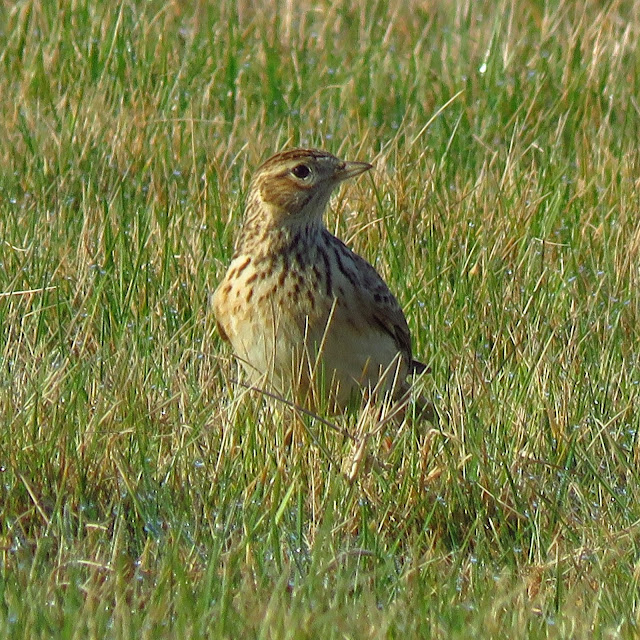Skylarks are stocky, streaky brown birds that feed on the ground, with white side of the tail and a whitish rear edge to their wings. They have short erectile crests. Males and females look alike. Skylarks sing high in the sky, in a display flight, a beautiful song that flows like a torrent of notes with no distinct phrases.
Skylark calling. Kingswood. 19/04/2021.
Status and distribution in Hull
We associate Skylarks with farmland and pastures so it might seem odd to include them in this series on Hull urban birds. Slylarks still breed in the remaining fields by the River Hull at Kingswood and on the fields at Bransholme, and by the docks at Saltend.
If you become familiar with the chirrupy flight call of the Skylark (reminiscent of passing a nail through the teeth of a comb) you will eventually realise that Skylarks often visibly migrate over the city in March and then again in October and November.
Conservation
Skylarks are red-listed in the UK and a UK BAP and a species action plan in the last Hull Biodiversity Action Plan. As other farmland birds, agricultural intensification and a switch from spring sown to autumn sown cereal reduced seeds and insects available to them. In grassland, increasing stock densities reduced grass cover and made trampling of nests more likely. Declines were very sharp in the 80s and 90s, with the population more stable in the last two decades in Yorkshire and the Humber according to the BTO BBS counts.
Management
In the Hull area development is probably the highest threat to the remaining Skylark population. The available land, for example when develop against flooding it could still be managed in a sensitive way to favour Skylarks.
More information
Broughton, Richard K. Birds of the Hull Area.BTO Bird trends: Skylark.
Marshall, B. Hull Biodiversity Action Plan. (2002).
BTO BBS breeding and trends.
Top shot. Photo taken at Flamborough, 25/02/2018.




No comments:
Post a Comment